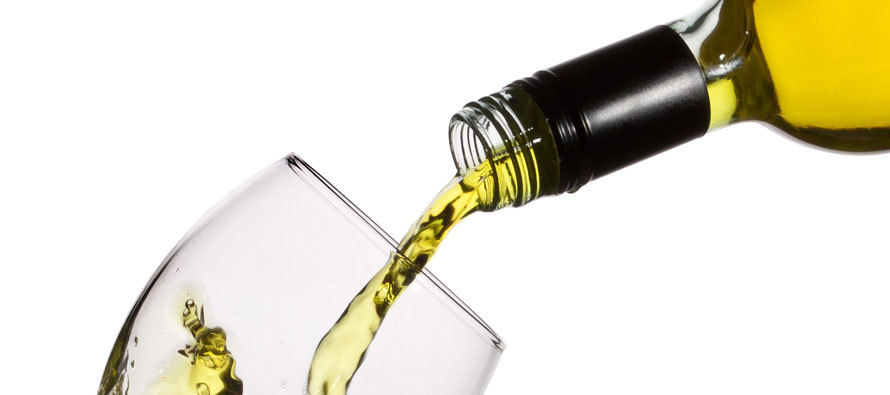Chardonnay: Matching its many styles with food

Chardonnay is the most planted wine grape in the United States. Although it is somewhat of a trendy wine, there is little doubt about its popularity: Chardonnay is the most loved wine in America. Why? It’s hard to say, as the wine has certainly had its ups and downs in both quality and price. However, the American public knows the wine, and familiarity seems able to support its popularity.
Chardonnay is a wine with several faces. The many styles of this wine can be attributed to a number of factors. Perhaps the most prominent among these factors are the ministration performed on the grape by the crafty hand of the winemaker. These include such methods as malolactic fermentation (converting tart acidity to mellow acidity), oak aging and yeast selection. Other factors are related to grape farming: climate, soil, location, clonal type and root stock.
Because Chardonnays can span the full gamut style-wise, it is difficult to know what any particular bottle of Chardonnay will taste like. The wine can be big, oaky, rich, soft, round and bursting, with tropical fruit on the one hand — while at the other end of the spectrum it can be crisp, fresh, light and steely with citrus and green apple flavors. In between these two extremes can be found a multitude of various styles. We’ll approach the many styles by considering the country of origin
Chardonnay’s origin is uncertain; nevertheless, there is little doubt that its reputation was established in Burgundy, France. Here we again find a spectrum of styles. The wines of Chablis are light, tart, fresh and crisp, with green apple-citrus flavors and steely minerality; these contrast with the big, rich, ripe, opulent tropical fruit flavored wines from Mersault. Yet, taken as a whole, French Burgundies are tarter and less encumbered than those from California and Australia, and have the greatest longevity of all Chardonnay wines.
In California you can find just about any wine style you can imagine. This makes the selection of a bottle of wine very difficult, short of tasting the wine. However, you will find cooler climate wines to be brighter, fresher and tarter. Oregon wines are more defined. The natural acidity in the grape provides the wine a certain verve and freshness that persists even when the wine is lightly aged in oak. The apple-citrus flavored wines from Washington are gifted with the same fresh, crisp, bright acidity. Barrel fermenting adds a little more body and toasty, buttery flavors, yet the wines retain their freshness.
Chardonnays from Australia have improved significantly. They have become lighter, fresher and more stylish. The former heftier style was built on a foundation of rich tropical fruit flavors and low-acidity. It can still be found, but there is a change in the works. The adjustment to a lighter, fresher version is a result of selecting grapes grown in cooler regions: Margaret River, Adelaide Hills, Yarra Valley and Tasmania. The better wines see less oak and are light, crisp, fresh, and stylish.
Although New Zealand is best known for fabulous Sauvignon Blanc, don’t underestimate their wonderful Chardonnays. The cool climate imparts sparkle and vitality to this varietal making the wines bright, fresh and citrusy. When oak and malolactic fermentation are used, there is care to see that it is done with great restraint. It is uncommon to come across big, toasty, buttery and vanilla-scented wine styles.
One of the prime considerations when pairing a wine with food is to match the weight of the wine to that of the food. That presents a big problem when you attempt to marry a big, heavy, oaky, buttery Chardonnay, which characteristically are low in acidity, with a big heavy dish. Without the benefit of weight-reducing acidity, the match is almost certain to be cloyingly heavy. Can you picture in your mind’s eye a pairing of such a hefty wine with the likes of Fettuccini Alfredo? The wine is heavy, the food is heavy, and so will be the sensation you experience in your stomach.
The best type of Chardonnay to match with food is the light, fresh, crisp, citrusy, unoaked (or lightly oaked) style that is grown in cooler climates. Let me give you a few examples of such savory matches: The briny flavors of the sea found in fresh, raw oysters will match flawlessly with a mineral, steely flavored French Chablis. What could be better than a bright New Zealand Chardonnay with savory grilled redfish? Another great match is a tart, light, Oregon Chardonnay with a touch of buttery flavor paired with boiled lobster and buttered corn. Try to accent your pairing with flavors found in both the wine and food, as the buttery flavor does in the above example.
Look at the wine regions listed above and let your imagination roam. I’m sure that your sybaritic inclinations can come up with a number of great wine-food matches.

John Fischer
Dr. John Fischer is a member and two-time president of the Omaha Branch of the International Wine & Food Society, past director of the Nebraska chapter of LADV, and the founding member of the Council Bluffs Branch of the International Wine & Food Society. He teaches a course on matching wine with food at the Institute for the Culinary Arts in Omaha and is the author of the books, “The Evaluation of Wine – A Comprehensive Guide to the Art of Wine Tasting” and “Wine and Food – 101.”
No comments
Write a commentOnly registered users can comment.











